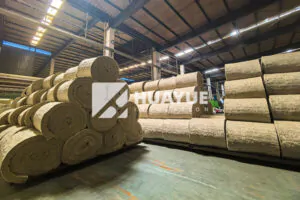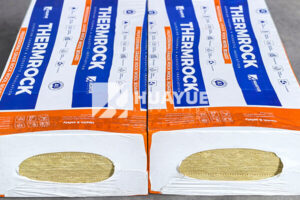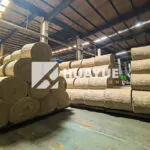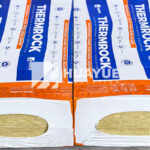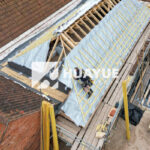Rock wool Insulation for Ceilings: Is It the Right Choice?
Many homeowners worry about heat loss and noise from above—especially in rooms right under poorly insulated ceilings. Rockwool insulation can solve these issues.
Rockwool insulation is effective and safe for ceilings. Its mineral fiber protects against heat loss, dampens noise, resists fire, and does not promote mold growth. Installation is easy with the right materials and methods.

Choosing the best insulation for your ceilings is a big decision. I want to share how rockwool stands out and break down its pros and cons for your planning.
Can ROCK WOOL be used in ceilings?
Many people worry that some insulation types are only for walls or roofs. The right insulation in ceilings can improve energy savings and comfort.
Yes, ROCK WOOL can be used in ceilings. Its structure and properties make it suitable for both suspended and flat ceiling installations, offering heat, sound, and fire protection.

Rockwool works well for ceilings because its fibers are dense and tough. When used overhead, the material does not sag. Rockwool stays in place and keeps its shape. That means gaps do not form over time. The fibers are made from natural rock and recycled material melted at high temperatures. After cooling, they are spun into fibers that resist both compression and moisture. I have seen this in plant applications, where tank rooms stay quieter and safer when rockwool covers the ceiling. Fire resistance is another benefit. Rockwool can stop the spread of flames within a ceiling cavity, keeping lower floors secure. Its thermal resistance helps cut down energy bills by reducing heat loss in winter and keeping rooms cool in summer. Installation in ceilings needs care to avoid gaps and air leaks. ROCK WOOL batts can be cut to fit between joists or grids. For drop ceilings, panels are fitted onto grids so the insulation sits flat. For concrete ceilings, fixing systems can secure the batts directly. Each method works well, but always check the finished fit for gaps.
What is the best insulation for ceilings?
Picking the right insulation is a challenge. Many factors can affect comfort and running costs. That is why comparing options helps make the choice easier.
For ceilings, the best insulation is one that balances thermal resistance, acoustic properties, fire safety, cost, and ease of installation. Rockwool often meets these criteria better than other common materials.
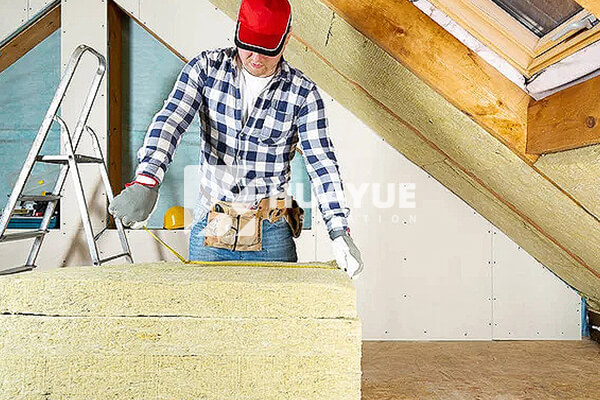
Many insulation choices exist, but needs differ for each setting. Fiberglass is common and has good thermal performance but is less fire resistant and can allow mold. Spray foam is easy to apply but costs more and traps moisture. Rockwool offers high R-value, which means less heat loss through the ceiling. This is important for rooms under an attic or above large halls. Its noise dampening keeps rooms quieter, helpful if noise from machines or footsteps above is a problem. In my own experience with chemical tank rooms, rockwool proved effective in blocking machine noise and hold down heating bills. For suspended ceilings, rockwool panels are simple to lay without special tools and do not sag over time. In fire-sensitive places or where building codes are strict, rockwool’s ability to withstand high temperatures makes it preferable. Rockwool does not burn and stops smoke movement, which is important in apartment buildings or plants. Here is a table comparing ceiling insulation options:
| Material | R-value | Fire Resistance | Acoustic | Cost | Mold Resistance |
|---|---|---|---|---|---|
| Fiberglass | High | Low | Low | Low | Medium |
| Spray Foam | High | Low | Medium | High | Low |
| Rockwool | High | High | High | Medium | High |
What are the negatives of ROCK WOOL insulation?
No insulation is perfect. Owners need to weigh both good and bad points. Knowing the drawbacks helps avoid surprises and choose wisely.
Rockwool insulation is dense and sometimes costly. It can cause skin irritation, be heavy, and may need extra safety gear for installation. Disposal or recycling may also be trickier than with foam.
Rockwool’s main downside is weight. It is much heavier than fiberglass or foam, so ceilings and supports must bear the load. In high-ceiling areas, proper fixing is vital to stop sagging and ensure safety. The fibers, if disturbed, can cause mild skin or eye irritation. Wearing gloves and a mask during installation is needed. While rockwool does not burn, it is not always the cheapest option. In small rooms or on tight budgets, fiberglass may be favored for cost reasons. Disposal is another concern. Rockwool can be recycled, but not every waste service accepts it, and landfill rules vary. Some installers find it a bit harder to cut or shape compared to foam. Still, these drawbacks are minor compared to the benefits when the application demands fire or moisture resistance and long-term durability.
How to hold up ROCK WOOL in a ceiling?
Installing insulation overhead seems hard, especially when you want it to last and stay in place. I often get questions about how to keep the insulation from sagging.
Hold up ROCK WOOL using support wires, netting, batt friction fit, or mechanical fasteners. Correct placement between joists and secure edge sealing ensures the insulation stays firm and effective.
If supporting rockwool between ceiling joists, the batts should fit tightly so they do not drop out. Use friction to keep them in place. If gaps exist, support wires or netting can be added below the batts. This is useful when joist spacing is wide or insulation is very thick. For drop ceilings, metal grids hold panels right above the tiles. No extra support is needed if the fit is good. In concrete ceilings or industrial settings, special anchor clips or fasteners are used. These fix the batts directly onto the surface. For larger industrial tank rooms, I add edge sealing with tape or foil to stop air leaks and prevent batts moving. Here are the main methods in table form:
| Ceiling Type | Rockwool Support Method | Tools Needed | Best For |
|---|---|---|---|
| Joist | Friction fit / Support wires | Wire, gloves, netting | Homes, attics |
| Suspended Grid | Rest on metal panels | Tape, cutters | Offices, shops |
| Concrete | Anchor clips / mechanical fix | Drill, fasteners | Industrial, tanks |
Conclusion
Rockwool makes ceilings safer, quieter, and more energy efficient. It fits most designs and needs strong support but rewards with long-lasting results.
You may also be interested in:
Ready to Get Started?
Get in touch with our experts for personalized solutions tailored to your needs.
Get Free QuoteLatest Articles
Let's Work Together
Ready to take your business to the next level? Get in touch with our team of experts and let's discuss how we can help you achieve your goals.
Get Free Solutions
